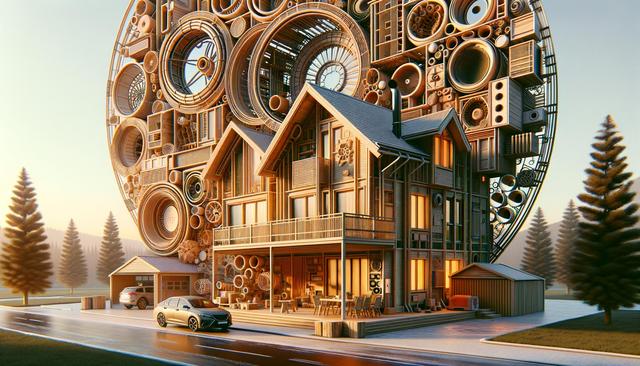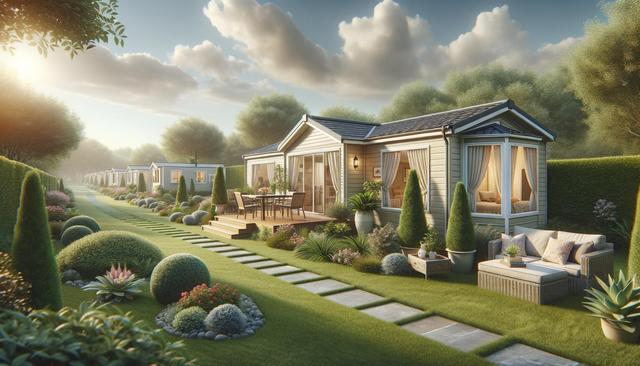Understanding the Concept of Unsold Modular Homes
Modular homes are prefabricated residential units constructed in sections at a factory, then transported and assembled on-site. They offer advantages like reduced construction time, consistency in quality, and often a lower price tag compared to traditional homes. Unsold modular homes refer to units that have already been manufactured but remain unpurchased, often stored in lots or warehouses. These homes may be available at reduced prices, making them an attractive option for budget-conscious buyers or developers.
Several factors contribute to homes remaining unsold. These can range from overproduction by manufacturers to changes in housing demand in certain regions. Additionally, some models might not align with prevailing buyer preferences, or they may have been customized in ways that limit their appeal. Understanding these dynamics is essential when starting your research journey into unsold modular homes.
Where to Search for Unsold Modular Homes
Finding unsold modular homes involves looking beyond conventional real estate listings. While some may be advertised directly to consumers, many are sold through dealers or modular home manufacturers. Here are some common sources to begin your search:
- Modular home dealers and display lots
- Factory direct websites and clearance sections
- Real estate auctions and foreclosure sales
- Classified ads in local and national housing markets
- Specialized housing expos or trade shows
In addition to these channels, networking with industry professionals such as contractors, developers, and housing consultants can reveal off-market opportunities. These professionals often have inside knowledge of unsold inventory or discontinued models that are still in excellent condition.
Evaluating the Condition and Suitability
Once you’ve identified potential unsold modular homes, the next step is a thorough evaluation. Even though these homes are new and unused, their storage conditions, age since manufacture, and compliance with local building codes must be considered. Here’s what to look for during your evaluation:
- Structural integrity – checking for any damage incurred during storage or transport
- Energy efficiency features and insulation standards
- Compliance with zoning and building codes in your intended location
- Warranties or guarantees still applicable
- Customization options, if any, still available
Working with a licensed inspector or modular home specialist can help ensure you’re making a well-informed decision. They can provide insights into required upgrades or the feasibility of relocating the unit to your site.
Cost Considerations and Financing Options
One of the most appealing aspects of unsold modular homes is the potential for cost savings. However, it’s important to look beyond the sticker price. Additional costs may include transportation, site preparation, utility hookups, permits, and any necessary modifications. Comparing these costs to a new custom-built modular or traditional home will give you a clearer picture of the overall value.
Financing for unsold modular homes can vary. Some banks and credit unions offer loans for manufactured and modular homes, while others may have restrictions based on the home’s age or condition. Alternative financing through personal loans or seller financing may also be available. It’s advisable to:
- Check with multiple lenders for modular-specific loan products
- Inquire about land-home packages that combine the home and land into one mortgage
- Explore government-backed lending programs for manufactured housing
Understanding all financial implications ensures you avoid surprises and can make the most of any discount on the initial purchase.
Making the Purchase and Preparing for Installation
After selecting an unsold modular home and securing financing, the next stage involves purchase agreements and installation logistics. It’s crucial to clarify terms with the seller, especially concerning delivery timelines, included components, and return policies, if any. Here’s how to streamline the process:
- Review the full purchase contract for clarity on conditions and warranties
- Coordinate with licensed contractors for site prep and installation
- Ensure all required permits are obtained in advance
- Communicate clearly with utility providers for timely connections
- Plan for final inspections and certifications as per local rules
Proper planning and coordination can significantly reduce delays and unexpected costs. It also ensures your modular home is move-in ready with minimal hassle.
Conclusion: Unlocking Value Through Smart Research
Researching unsold modular homes can be a rewarding path toward affordable, efficient housing. By understanding where to look, how to evaluate options, and the total cost of ownership, buyers can uncover opportunities that offer both quality and value. Whether you’re a first-time homeowner, investor, or downsizing retiree, taking the time to explore this niche market can lead to practical and satisfying results. With planning, due diligence, and a clear strategy, unsold modular homes may present a smart alternative in today’s evolving housing landscape.


